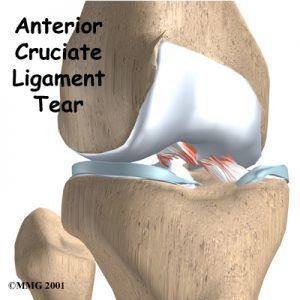ACL Tear/ Reconsturction

An anterior cruciate ligament (ACL) injury is a tear in the ACL ligament. The ACL is located in the middle of the knee joint and connects the lower leg bone to the thigh bone. It stabilizes the knee by preventing the thigh bone from sliding too far forward at the knee.

Symptoms
When the ACL tears, you may hear a popping sound. As you stand, the knee will probably give-way immediately, and it will be difficult to walk on the affected leg. There is usually moderate pain and swelling of the knee joint, although in the first several hours, this may be minor. It will, however, worsen over the first two days, and then begin to subside.
ACL Reconstruction
Dr. Tony completed an extra Fellowship year focusing on arthroscopic knee surgery
During this procedure Dr. Tony, , will remove the torn ligament using your own tissue or the tissue of an organ donor to make a new ACL. Then he will attach the new ligament to the bone with screws or other devices to hold it in place. As your knee heals, the bone tunnels created by to bring new tissue through will start filling in, securing the new ligament. The complete healing process usually takes 6-12 months.
Causes
Most ACL tears occur during non-contact injuries, such as:
- Planting the foot and cutting
- Pivoting
- Landing on a straight leg
- Making a sudden stop
The ACL can also be injured from a direct blow to the knee.
Risk Factors
A risk factor is something that increases your chance of getting a disease or condition.
- Sex: female
- Muscle imbalance between the quadriceps and hamstrings (weaker hamstrings)
- Weak quadriceps and hamstrings
- Playing sports that require sudden changes of direction and deceleration (e.g., soccer, skiing, basketball)
- Incorrect technique for cutting, planting, pivoting, or jumping
Rehabilitation
- A hinged brace is usually used for 6-8 weeks to initially protect the reconstruction.
- You usually will be able to fully weight bear with crutch assistance unless a meniscal repair is performed.
- Typically you will be riding a stationary/spin bicycle within 2 weeks.
- Return to unrestricted activity usually occurs 6-9 months depending upon your progress and passing functional testing.


